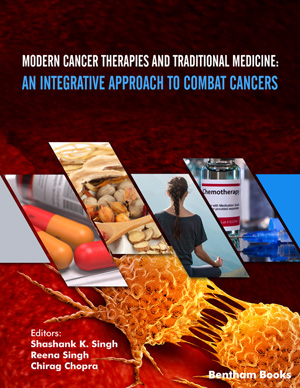
Abstract
Background: Hepatocellular carcinoma (HCC) is one of the most common cancers, associated with a high rate of mortality. A disturbance between cell proliferation and cell death is one of the cancer hallmarks including HCC. Cell proliferation is mainly controlled by the cell cycle. The arrest of the cell cycle is one of the important targets of anticancer agents.
Objectives: The present study tries to clarify the exact role of some natural products such as daidzein (DAZ) and alcoholic chicory leaf extract (CE), as possible regulators of cell cycle and apoptosis.
Methods: HCC in rats was induced using diethylnitrosamine (DENA). Ninety rats were allocated and divided equally into nine groups, treated with CE, DAZ, a combination of both, and sorafenib with non-treated control groups.
Results: Treatment with CE, DAZ, and their combination significantly downregulated hepatic tissue expression of cyclin D1/CDK4 axis as well as cyclin A/CDK2 axis. The suggested therapeutic protocol inhibited the proliferation and dampened Bcl-2 expression. Furthermore, the efficiency of combining CE and DAZ demonstrated a potency comparable to sorafenib in terms of cyclin D/CDK4 axis expression, as well as; this combination protocol was more potent in revealing a potentiated inhibitory effect on cyclin A and Ki-67 expression.
Conclusion: Treatment with DAZ or CE alone, or in combination, could possess an inhibitory effect on hepatocarcinogenesis via cell cycle arrest, inhibition of proliferation through suppression of Ki-67 expression, and apoptosis induction, mediated by downregulation of Bcl-2.
Keywords: Daidzein, chicory, HCC, apoptosis, cell cycle, cyclin D/CDK4, and cyclin A/CDK2.
[http://dx.doi.org/10.1038/nrc.2015.2] [PMID: 26678314]
[http://dx.doi.org/10.1016/j.abb.2004.12.022] [PMID: 15708369]
[http://dx.doi.org/10.3748/wjg.15.4538] [PMID: 19777612]
[http://dx.doi.org/10.3390/cancers7010179] [PMID: 25625291]
[http://dx.doi.org/10.1101/gad.13.12.1501] [PMID: 10385618]
[http://dx.doi.org/10.1016/j.imbio.2007.07.003] [PMID: 18241696]
[http://dx.doi.org/10.1016/j.domaniend.2005.11.002] [PMID: 16359839]
[http://dx.doi.org/10.1038/sj.ejcn.1601419] [PMID: 12373616]
[http://dx.doi.org/10.1016/j.phymed.2008.04.006] [PMID: 18541420]
[http://dx.doi.org/10.4103/0973-1296.80675] [PMID: 21716923]
[http://dx.doi.org/10.5897/AJPS2013.1021]
[http://dx.doi.org/10.1016/j.ejphar.2011.04.007] [PMID: 21513709]
[http://dx.doi.org/10.1016/j.biopha.2018.05.081] [PMID: 29803928]
[PMID: 31545234]
[http://dx.doi.org/10.1016/j.jep.2012.08.032] [PMID: 22971663]
[http://dx.doi.org/10.2174/1568009621666210811121120] [PMID: 34382525]
[http://dx.doi.org/10.1007/s11010-012-1381-0] [PMID: 22763672]
[http://dx.doi.org/10.4149/neo_2016_405] [PMID: 27268915]
[http://dx.doi.org/10.1016/j.surg.2014.04.055] [PMID: 24953273]
[http://dx.doi.org/10.1016/j.fct.2013.01.035]
[http://dx.doi.org/10.1093/jnci/82.13.1113] [PMID: 2359137]
[http://dx.doi.org/10.1038/227680a0] [PMID: 5432063]
[http://dx.doi.org/10.1100/2012/142983] [PMID: 23304076]
[http://dx.doi.org/10.1023/A:1002888016985]
[http://dx.doi.org/10.1021/jf051116n] [PMID: 16218660]
[PMID: 33073617]
[http://dx.doi.org/10.1016/j.biopha.2018.02.128] [PMID: 29524879]
[http://dx.doi.org/10.1016/j.lfs.2012.08.022] [PMID: 23227466]
[http://dx.doi.org/10.1016/j.fshw.2017.09.001]
[http://dx.doi.org/10.1080/01635581.2015.1004736] [PMID: 25803129]
[http://dx.doi.org/10.1007/s11033-019-04658-1] [PMID: 30719606]
[http://dx.doi.org/10.1016/0092-8674(95)90039-X] [PMID: 7664346]
[http://dx.doi.org/10.1016/j.canep.2009.12.018] [PMID: 20097631]
[PMID: 10656454]
[PMID: 26722504]
[http://dx.doi.org/10.3748/wjg.v10.i10.1533] [PMID: 15133868]
[http://dx.doi.org/10.3892/ijmm.2018.3531] [PMID: 29512690]
[http://dx.doi.org/10.1007/s12013-012-9418-2] [PMID: 22926545]
[http://dx.doi.org/10.1016/S1028-4559(10)60092-7] [PMID: 21199742]
[http://dx.doi.org/10.2174/1574892810666151102110248] [PMID: 26522014]
























